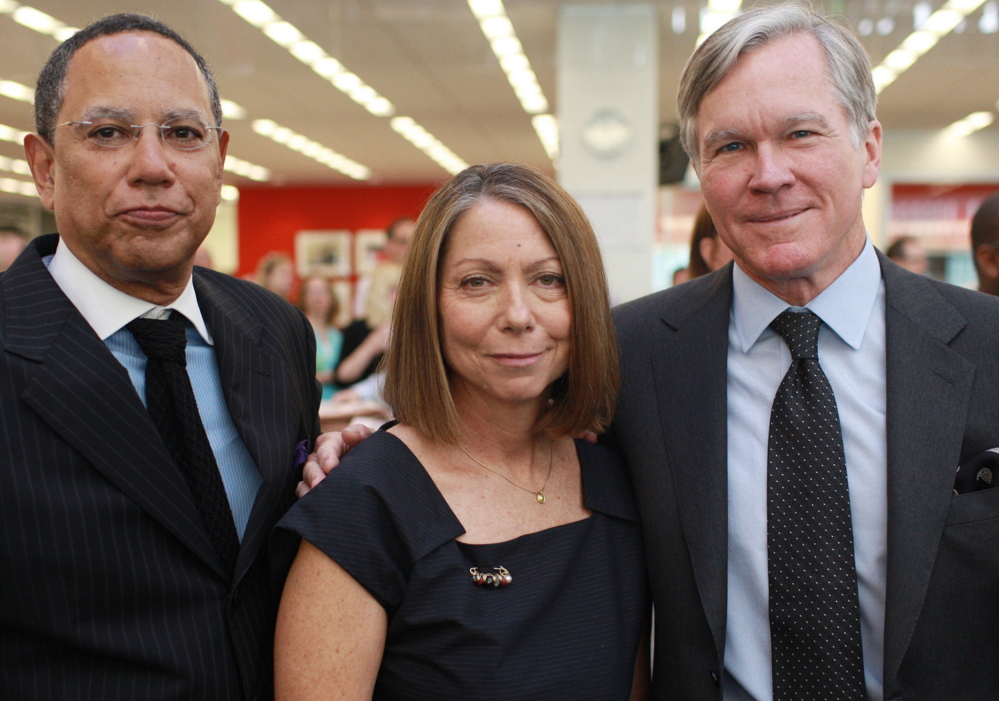NEW YORK — When Arthur Sulzberger Jr. named Jill Abramson the first female editor of the New York Times Co. in 2011, he sang her praises as “the perfect choice to lead the next phase of The Times’s evolution.”
In fact, the newspaper’s publisher and chairman was never comfortable with Abramson, according to people familiar with the situation, and Wednesday he unceremoniously pushed her out. Frictions between Sulzberger, 62, and Abramson, 60, had been worsening in recent months, said the people, who cited a fundamental clash of personalities.
“None of this makes sense for it to happen the way it did,” said Alex S. Jones, a director at the Shorenstein Center at Harvard University and author of the book “The Trust,” about the Ochs-Sulzberger family that controls the Times Co. “Especially given everything that it took to get her there, and what she represents as an icon of journalism.”
Abramson’s successor, Dean Baquet, the newspaper’s first African-American executive editor, takes over as The Times battles shrinking advertising sales and competition from a flurry of blogs and upstarts that appeal to younger readers. Chief Executive Officer Mark Thompson, hired in 2012, has unveiled two digital subscription products – one aimed at younger readers with a lower-priced news app called NYTNow and a higher-end plan called Times Premier.
Abramson’s ouster was a shock to many in the newsroom, according to people who were present. Before joining the Times, Abramson had distinguished herself as an investigative reporter at the Wall Street Journal and had championed hard-hitting journalism as executive editor. Even so, many applauded the appointment of Baquet, who is seen as a dogged defender of newsroom policies and is well liked by reporters who have worked directly with him.
While the publisher and editor of a newspaper have inherent conflicts – with the publisher working to attract advertisers and with the editor dedicated to publishing stories without fear or favor – the friction between Sulzberger and Abramson had personal overtones, according to two people.
She had told several colleagues that Sulzberger thought negatively of her, they said. Sulzberger saw Abramson as overly enamored of all the public attention afforded the executive editor of what is widely considered the world’s most powerful newspaper, they said.
As the first female to run the Times in its 162-year history, Abramson was one of the most powerful women in media. She had taken to giving interviews and appearing on panels without consulting the company, a move that rankled Sulzberger, according to two people. He saw her as someone who liked having the title more than doing the job, three people said.
As publisher, Sulzberger can hire and fire executive editors and doesn’t require board approval. When he announced the change Wednesday, Sulzberger said he was doing so because he thought new leadership would improve some aspects of the management of the newsroom.
The Times said Wednesday that as part of a settlement agreement between Abramson and the newspaper, neither side will go into detail about her firing.
Send questions/comments to the editors.



Success. Please wait for the page to reload. If the page does not reload within 5 seconds, please refresh the page.
Enter your email and password to access comments.
Hi, to comment on stories you must . This profile is in addition to your subscription and website login.
Already have a commenting profile? .
Invalid username/password.
Please check your email to confirm and complete your registration.
Only subscribers are eligible to post comments. Please subscribe or login first for digital access. Here’s why.
Use the form below to reset your password. When you've submitted your account email, we will send an email with a reset code.